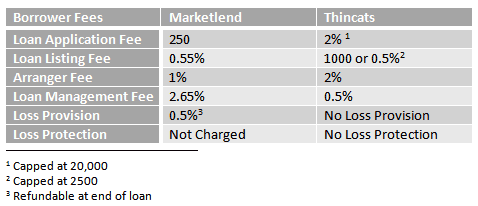Why you need loss protection when investing in Peer to Peer lending
If there was one strong lesson learnt from the GFC, amongst many, it was that the issuers who had their own capital invested and at risk in their offerings to investors (“skin in the game”) were the ones that typically survived the GFC, because they took on better risk at the time of obtaining the loan and were more committed to returning capital back to investors. It was their money at risk as well, and in some cases the issuers are the last to get their capital back.
Marketlend is very committed to this concept. It is a wholly owned Australian company that is here for the long term and testimony to that is that we invest with the lenders. We invest in first loss position and are charged fees for that investment similarly to the lenders.
Protection against losses
- We are the only peer to peer lender in Australia to provide first loss protection which can be as high as 30% in addition to a loss provision. This means we invest with the lenders and suffer the first loss in a situation where a borrower defaults.
- There is a cost to this protection and it is taken into account in the fees paid by the borrower and not charged to the lender. In addition to the loss protection, we also have a provision for losses.
- The only peer to peer lender in Australia with a provision for losses as well as Marketlend is Ratesetter, and based on their figures as of 29 July 2015, they have A$444,372 in the provision, for loans outstanding of 6,034,957 equivalent to 7.36%.
- To date we have invested on average 12.44% in first loss protection and this is individual protection. This means that there is no depletion of the loan protection for one loan if another loan fails, whereas Ratesetter does not offer the same.
- As a note, based on the website of Thincats UK, there are cumulative expected losses of 1.16% for their 5 year period, 2010-2015.
- We do offer insurance on our loans. It presently is only available for our debt finance product. The policy states that where there is a failure by a borrower, this will result in an ability to make a claim on the borrower for 90% of any invoices we purchased. Again we will invest the remaining 10%.
- Marketlend has had no defaults to date.
Fees
At Marketlend, all fees are paid by the borrower, and not from the loan proceeds other than the Loan Listing Fee (0.5%). This is an important point as that if it is paid from the proceeds of the loan, it means the investor is funding the costs.
Below is a snapshot comparison of our fees compared to Thincats.

Chinese Stockmarket crisis and how it is a worry
What do the Casino, a dart board, and the Shanghai Stock Exchange all have in common? Luck, and a little bit of skill. It’s important to realize this when you invest in volatile areas. As the heavy, iron wheels of the Chinese economy begin to slow, we, as investors, must think about the repercussions this has on our own economy.
The Chinese and Australian economies are very closely intertwined, as China demands much of Australia’s top exports, Minerals and Education. As a result, the recent Chinese stock market scare has also put fear into the hearts of many Australian investors. So, as an investor, what do you need to know about the Chinese Stock Market crash?
Well, I will summarize in a few brief points:
1. The term “down a third over the past month” to describe the Chinese stock market has been thrown around a lot on the news. However, a figure that they aren’t showing, is the fact that the Chinese stock market is still up 80% over the last year. Which would be amazing growth… for any other country but China.
2. Essentially, the other sectors of the Chinese economy are performing fine, including property and money-markets.
3. It is important to remember that any sort of over-valuation will require correction, and the Chinese stock market was simply over-valued at the time. When I put it like this, you are probably scratching your head, wondering why the entire globe seems to be up in arms about it.
Well, it is the Chinese Government’s response to a relatively common economic phenomena (over-valuation, and subsequent correction), that has investors worried. The Chinese Government decided to cap short-selling and employ central-bank funds to purchase stocks on the Chinese Stock Market.
You don’t need an Economics degree to see why that can have some adverse side-effects. By capping short-selling, the government further raises the price of the listed shares, listed pre-cap, hence distorting the over-valued shares even further, but more probably leading to a decrease in growth, in the long-term. So what does this emphasize?
The importance of valuation, and choice. P2P lending provides an opportunity to invest into companies that you can truly trust and gain full information on their business. It allows you to cross different sectors of the economy, whilst receiving a higher rate of return than most blue-chip stocks on the ASX. But more importantly, it is immune from politics.